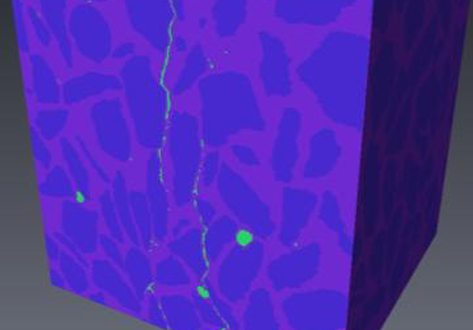Characterization of 3D fracture evolution in concrete using in-situ X-Ray Computed Tomography testing and Digital Volume Correlation

X-ray Computed Tomography (XCT) is a powerful technology that can accurately image the internal structures of composite and heterogeneous materials in three-dimensions (3D). In this study, in-situ micro XCT tests of concrete specimens under progressive compressive loading are carried out. The aim of the observations is to gain a better understanding of 3D fracture and failure mechanisms at the meso-scale. To characterise the fracture evolution as the deformation increases, two methods are used. The first segments the reconstructed absorption contrast XCT images using AVIZO software into different phases, namely, aggregates, mortar, cracks and voids. The second uses the digital volume correlation (DVC) technique to map the relative deformations between consecutive XCT images with high precision; bulk mechanical properties can be measured and cracks visualised via their opening displacement. The 3D crack profiles obtained by these two methods are compared, and the contributions that they can make to image-based modelling and its validation are noted.